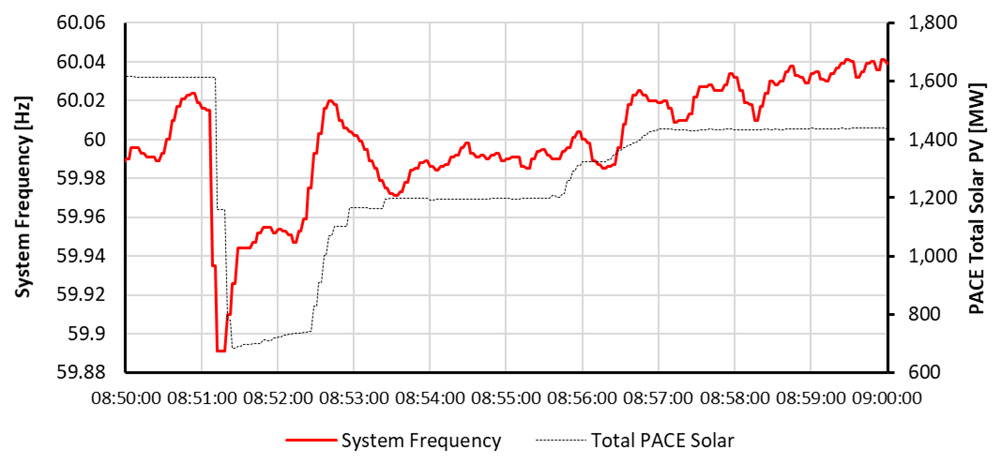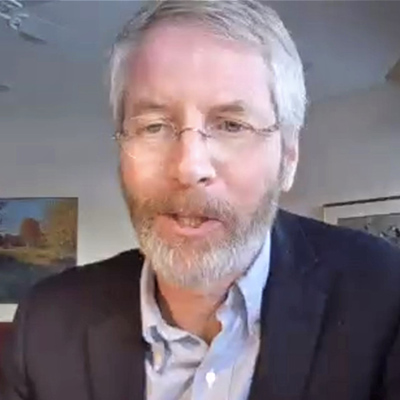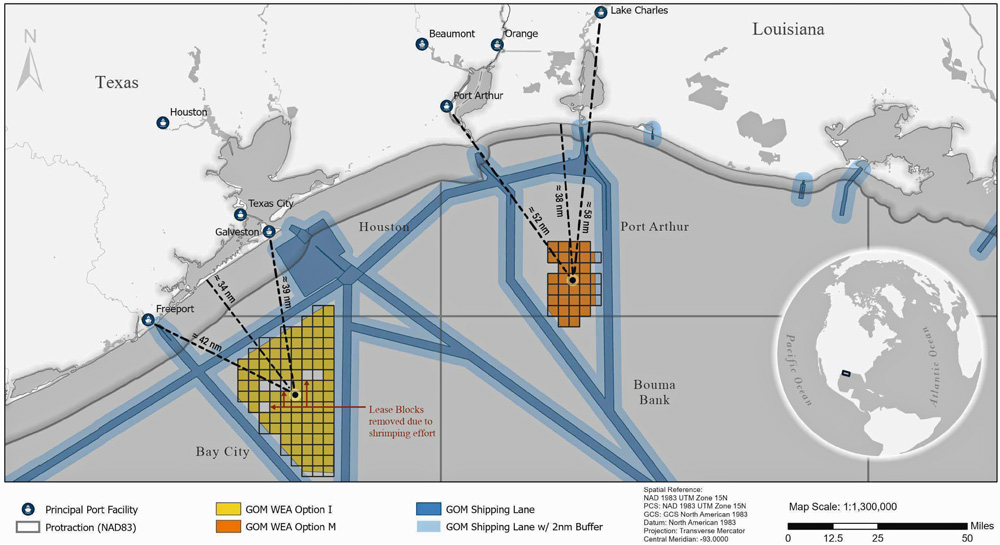FERC received rehearing requests Monday from around the industry on Order 2023, which mandated changes to its pro forma interconnection rules. (See FERC Updates Interconnection Process with Order 2023.)
MISO, PJM and SPP filed a joint request for rehearing, saying they want to ensure that they can continue to innovate with their own changes to their interconnection processes.
The RTOs took issue with the order’s requirement that planners use operating assumptions supplied by energy storage developers, unless they go against good utility practice. Ensuring that storage owners actually follow those assumptions in their operations would be burdensome and impractical, they said.
“Storage would be incentivized to lower their costs by stating in their interconnection application their intent to charge to relieve constraints, when in actuality in real time they will not always be capable of fulfilling that commitment,” the RTOs said. “As a practical matter, there is no effective enforcement of the commitment, and the final rule does not purport to address this critical reliability issue.”
FERC at least should allow ISOs and RTOs to develop standard procedures for dealing with storage projects in their queue, rather than the case-by-case approach in the order, which would at least promote uniformity in treatment of similarly situated interconnection customers.
PJM, MISO and SPP all use multiphase interconnection processes, but Order 2023’s pro forma rules have just one phase, used to base the deadlines and related fines that grid operators face for late studies. That makes it unclear how the rules should apply in their markets, the RTOs said. Rather than making them liable for deadlines in each phase, they asked to have it apply to the aggregate timeline of their multiphase queue processes.
Ultimately interconnection customers want their final studies on time, so as long as the full process is timely, it should not matter if some earlier phases experienced delays that were made up later, the three said. Late penalties also should apply to entire clusters, rather than having planners face them for every project they work on individually.
ISOs and RTOs are nonprofits, so another issue the three raised was how to recover their costs, asking for additional ways beyond collecting fines from their members. If a delay is because of one interconnection customer, as opposed to the grid operator itself or a member utility, then it should be liable for any fines, they argued.
NYISO filed its own request for rehearing, which also questioned the fines, but it focused on the timelines that Order 2023 set out for interconnection studies. The 150-day time frame for a cluster study is not tailored to the realities of New York’s grid and its stricter-than-average reliability requirements, but it still could be used to assess fines.
“These stringent criteria are driven by, among other things, the unique complexities of the transmission system in New York City and Long Island, with their condensed geographic footprint and high population density,” NYISO said. “This existing complexity is being further challenged by the influx of significant offshore wind generation.”
NYISO is working on a package of changes to its queue, and its goal is to speed up the process, but 150 days would prove too tight for it.
New York PSC Argues in Favor of Fines
The New York Public Service Commission filed comments arguing that FERC should make sure that ISOs and RTOs cannot get out of the fines that Order 2023 requires for transmission planners who are late with interconnection studies. The order suggests grid operators could file one-off requests to recover the fines from market participants, it said.
“Allowing RTOs/ISOs to simply pass along penalties to market participants, which will ultimately be borne by customers, would undermine [FERC’s] goal by making RTOs/ISOs indifferent to penalties and failing to induce the intended behavior,” the New York PSC said. “Moreover, forcing market participants/customers to pay increased costs attributable to penalties incurred by an RTO/ISO that failed to comply with the tariff time deadlines would be unjust and unreasonable.”
FERC has expressly prohibited non-ISO/RTOs from recovering the penalties through transmission rates, and it should do the same for the nonprofit grid operators, the PSC said. It also should reverse its finding that they can make a one-off filing to recover penalties from market participants.
“The commission should instead limit RTO/ISO recovery options to alternative mechanisms that do not involve customer funding but could elicit the desired behavior, such as adjustments, both positive and negative, to RTO/ISO salaries/bonuses,” the PSC said.
Utilities Lobby for ‘Reasonable Efforts’ Standard
The Edison Electric Institute also took issue with FERC’s decision to eliminate the “reasonable efforts” standard for getting interconnection studies in on time and the imposition of fines. FERC cited the lengthy interconnection delays experienced around the country as the main reason for eliminating the standard, but it did not connect those delays to the standard.
“Only after the commission has had an opportunity to evaluate the efficacy of other reforms intended to streamline the interconnection process (e.g., reforms to incentivize interconnection customers to reduce interconnection delays) can it determine that the reasonable efforts standard is unjust and unreasonable,” EEI said.
A rapidly changing resource mix, market forces and emerging technologies are among the many factors contributing to the increasing number of interconnection requests and related delays. Transmission owners can control none of those factors, and assigning them penalties will not change that, EEI said.
FERC never has found a transmission provider at fault for interconnection process delays, nor shown that any specific transmission provider was contributing to delayed studies, it said.
“Nonetheless, the commission seems intent on establishing a strange kind of parity in its reforms: If the threat of penalties is appropriate for eliciting certain behavior from one set of stakeholders, then penalties must be appropriate for all stakeholders in the interconnection process,” EEI said. That does not make sense because many factors, including the number of requests and the need to follow reliability standards, are outside transmission providers’ control, it said.
Clean Energy Groups Seek Changes
The American Clean Power Association, Advanced Energy United and Solar Energy Industries Association filed a joint request for rehearing, which applauded FERC for its work to reform the queues. But given how large the order was, the groups said they have some issues where the order would benefit from rehearing.
The groups’ first ask is to remove a change to the definition of “standalone network upgrade” that would limit their construction to cases where one interconnection customer builds them. FERC reasoned the change would reduce disputes by avoiding situations where multiple interconnection customers seek to build the same transmission. But cluster studies for interconnection have occurred for years and have not led to major disputes between projects seeking to build the same standalone upgrade, they said.
“The revised definition of standalone network upgrade removes the ability of interconnection customers to determine whether and how to exercise their discretion or the option to build for the majority of upgrades that will be identified through a cluster study,” the groups said. “It further modifies the status quo by reducing the number of network upgrades that would qualify as standalone network upgrades for which interconnection customers could exercise their discretion.”
The groups generally pushed for more flexibility for interconnection customers, also seeking more time to modify a proposed project’s size and to push back when they have to pick a definitive point of interconnection. The commission required both when the “customer engagement window” ends, reasoning that developers would have enough information at that point to make final decisions.
The three lobbies argued more flexibility was warranted because requiring final decisions so early would lead to more withdrawals later on and risk “cascading restudies.” That would be more disruptive than allowing minor changes later in the process, they said.
Heat Map Value Questioned
Several utilities outside of RTOs — Dominion Energy South Carolina, NextEra Energy’s Florida Power & Light and Xcel Energy’s Public Service Company of Colorado — filed jointly asking for a change to the requirement that grid planners place interactive “heat maps” on their public websites. The maps would offer interconnection customers and others a way to explore available interconnection capacity on transmission providers’ systems.
The utilities said FERC failed to perform a cost-benefit analysis on the requirement, which would cost $7.4 million upfront in non-RTO regions and $666,000 annually for maintenance. The requirement will have “dubious value” for interconnection customers in non-RTO regions, they said.
Such heat maps make financial sense when done at scale for several utilities, so it could make sense to require ISO/RTOs to host them, but the three utilities said the lack of scale on individual systems made it too costly.
“Due to the significant cost asymmetry — 37 individual websites required in non-RTO regions versus seven websites in ISO/RTO regions — the cumulative expense and administrative burden on constrained engineering labor caused by the heat map mandate on transmission providers in non-RTO regions is at least five times as significant as the burden on ISOs/RTOs, even though transmission providers in non-RTOs only oversee generator interconnections for roughly one-third of the nation’s transmission systems,” they said.
Flexibility Sought
PacifiCorp spent much of its rehearing request focused on the penalties for transmission providers, but it also argued for more flexibility for it and others to implement the rules. The utility noted that it already has adopted many of the changes required by Order 2023.
FERC set up a transition process for providers still using its old pro forma rules but not for early actors such as PacifiCorp, the utility said. If it does not seek a variance from the pro forma rules, it would have to implement them suddenly regardless of the existing queue, it said.
“PacifiCorp and many of the early adopters are currently in the process of one or more cluster studies,” the utility said. Not allowing early adopters to use a transition cluster study process is both unworkable and goes against FERC’s assurance that Order 2023 would not interfere with interconnection studies in progress, it added.
On rehearing, FERC should find that PacifiCorp and other similarly situated transmission providers can process existing interconnection customers under current, or transitional rules, while applying new reforms to interconnection customers once those are completed, it said.
PJM filed an individual request for rehearing that also was focused on flexibility, given that it has started to implement its own changes, which it said should satisfy Order 2023’s requirements or be superior to them. While FERC said it did not want to disrupt such efforts, PJM said it wants a clearer signal before any lengthy compliance processes that its work will not be overturned.
Without that clarification, FERC will be responsible for creating uncertainty at the very point where certainty around the rules for expeditious processing of queue requests is so critical, the RTO said.
“In short, now, when PJM is ‘mid-flight’ with its new interconnection process, is not the time to require PJM to substantially retool its interconnection processes or to cause substantial uncertainty as to how to comply with the final rule that will last for months and distract from the vital effort to process backlogged interconnection requests as expeditiously and efficiently as possible,” the RTO said.
PJM also wants clarification that it will not be required to implement the final rule in a way that would modify or undermine its recently approved new rules. The commission should consider those changes as a package and not require PJM and stakeholders to engage in “an item-by-item justification of every variation from the minutiae of the final rule’s requirements.”
Along with most other transmission providers filing for rehearing, American Electric Power wants FERC to reverse its decision on imposing fines for delayed studies, but the company also asked for some changes on how new projects can be built at sites owned by retired power plants.
“Generation retirement replacement programs take advantage of current land use and interconnection facilities to swap generation units set for retirement with newer, more efficient capacity,” AEP said. “Such programs will support the reliability of the grid and enhance the efficiency of interconnection study processes by allowing for the timely interconnection of needed new capacity resources.”
AEP and a few other parties brought up the issue in comments, but it was not part of the Notice of Proposed Rulemaking that led to Order 2023, it said, and FERC said it lacked the evidence to approve any pro forma rules around how to replace retiring generators. The utility disagreed, saying the idea is one of the most vital tools to maintaining resource adequacy, as they can quickly connect new supplies of power.
“Ensuring replacement projects are considered outside the cluster study process will help reduce the number of projects within, and increase the efficiency of, the cluster study itself — supporting the timely interconnection of projects consistent with one of the primary purposes of Order 2023,” AEP said.
WATT Coalition Lobbies for DLRs
The WATT (Working for Advanced Transmission Technologies) Coalition filed for rehearing on two issues involving dynamic line ratings (DLRs), which take into account the conditions around power lines such as wind speed and temperature to get a more accurate picture of how much capacity they have.
FERC excluded DLRs from its list of alternative transmission technologies (ATTs) that can be considered in cluster studies. It also allowed transmission providers to “disregard and disadvantage” alternative technologies for traditional upgrades even when alternatives would be more cost effective.
DLRs were part of the alternative technologies to be considered in the NOPR, but in the final rule, FERC removed them despite them being proven, mature technologies that have saved interconnection costs in other countries, WATT said.
One WATT member was quoted $190 million in upgrades for one projected 4% transmission line overload during the shoulder season, with the grid operator assuming it would charge during the worst-case contingency events.
“The battery would provide energy to an area of anticipated economic development but would be uneconomic with quoted upgrades,” WATT said. “DLR is a solution that could bring the project back into viability if permitted by the transmission owner.”
FERC got comments for and against every ATT brought up in the NOPR, but it only removed DLRs, saying their temporary impact “may not be an adequate substitute” for steel in the ground, WATT noted.
“DLRs should be treated on equal footing with the other ATTs included in the final list, and as the NOPR proposed,” WATT said. “Equally, it is arbitrary and capricious, and contrary to law, to give transmission providers unfettered discretion regarding whether ATTs should in fact be used.”


